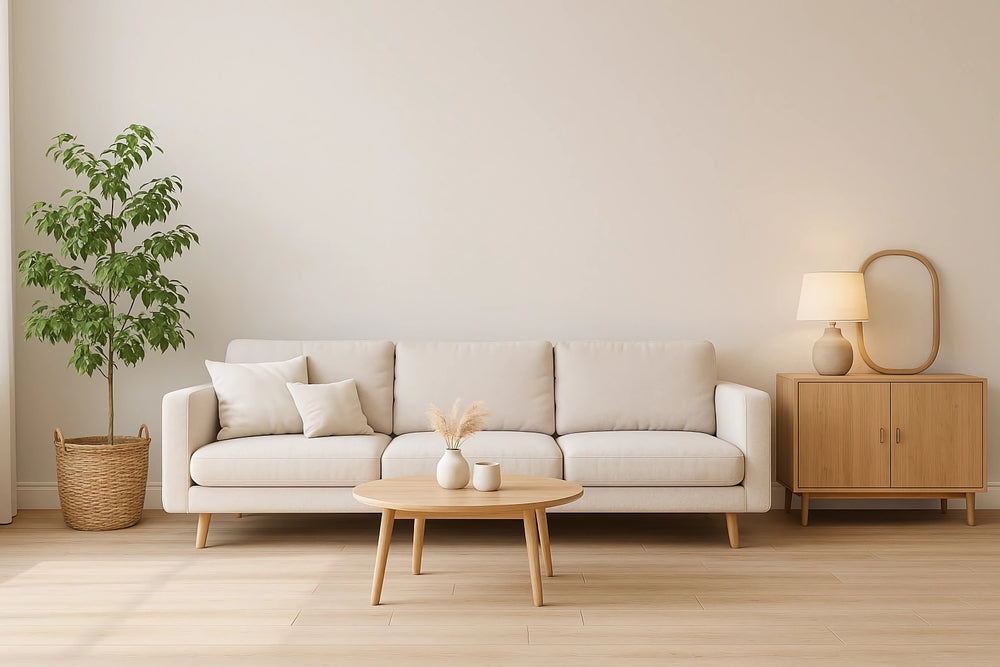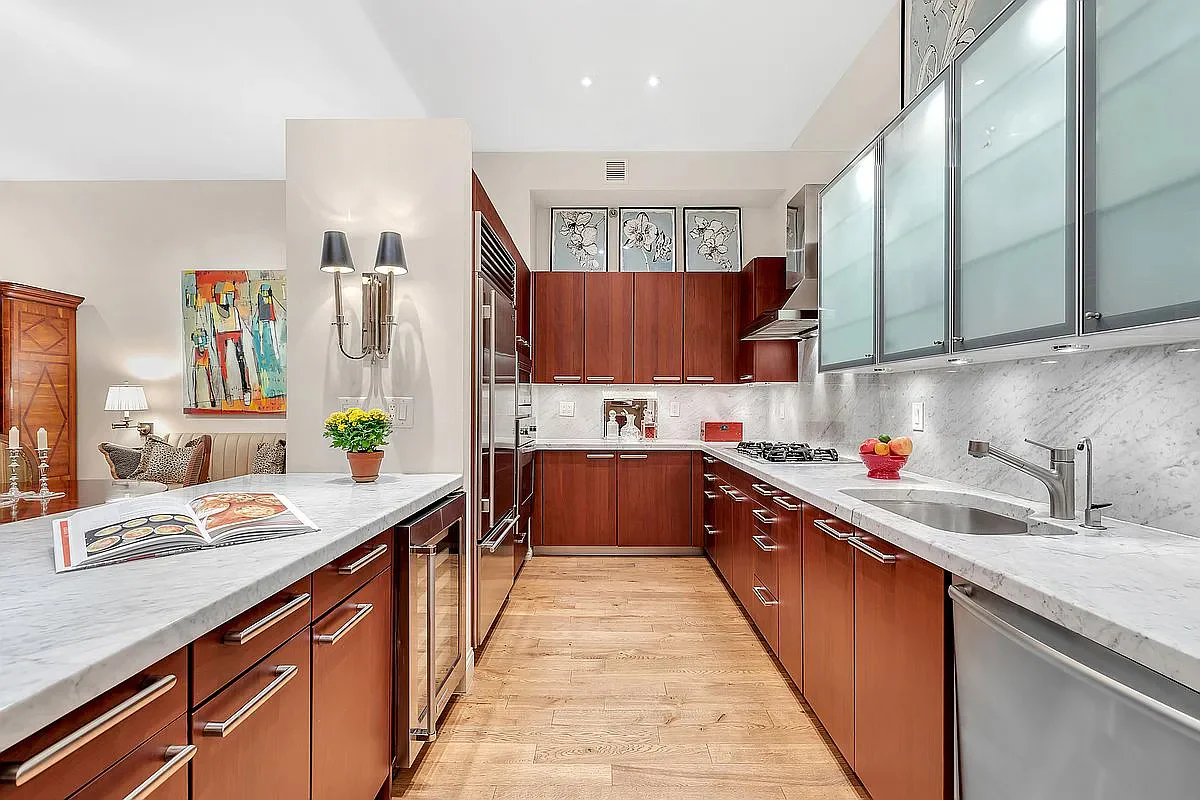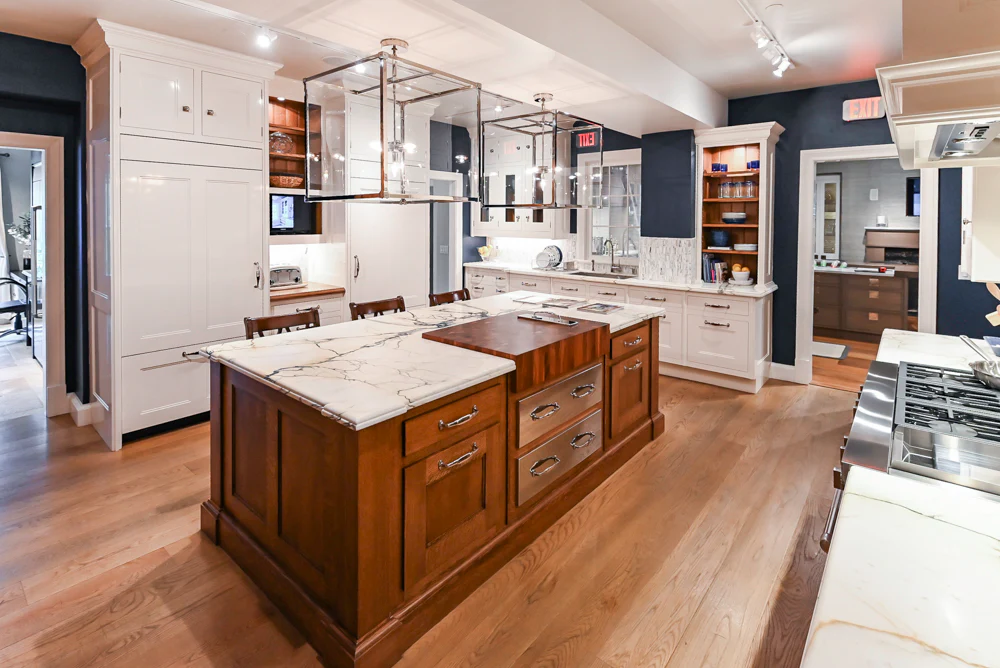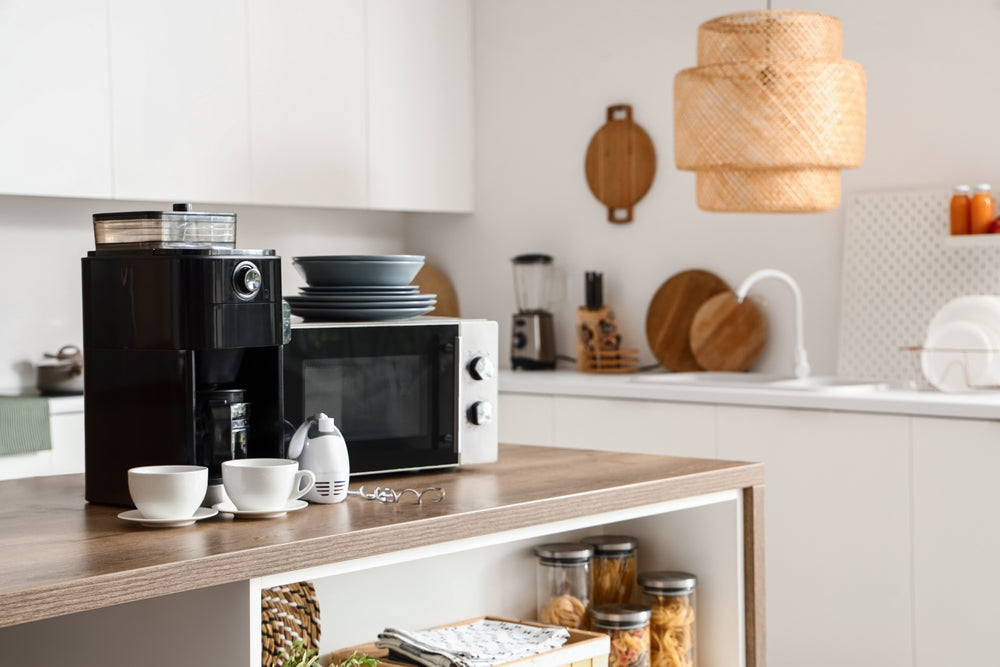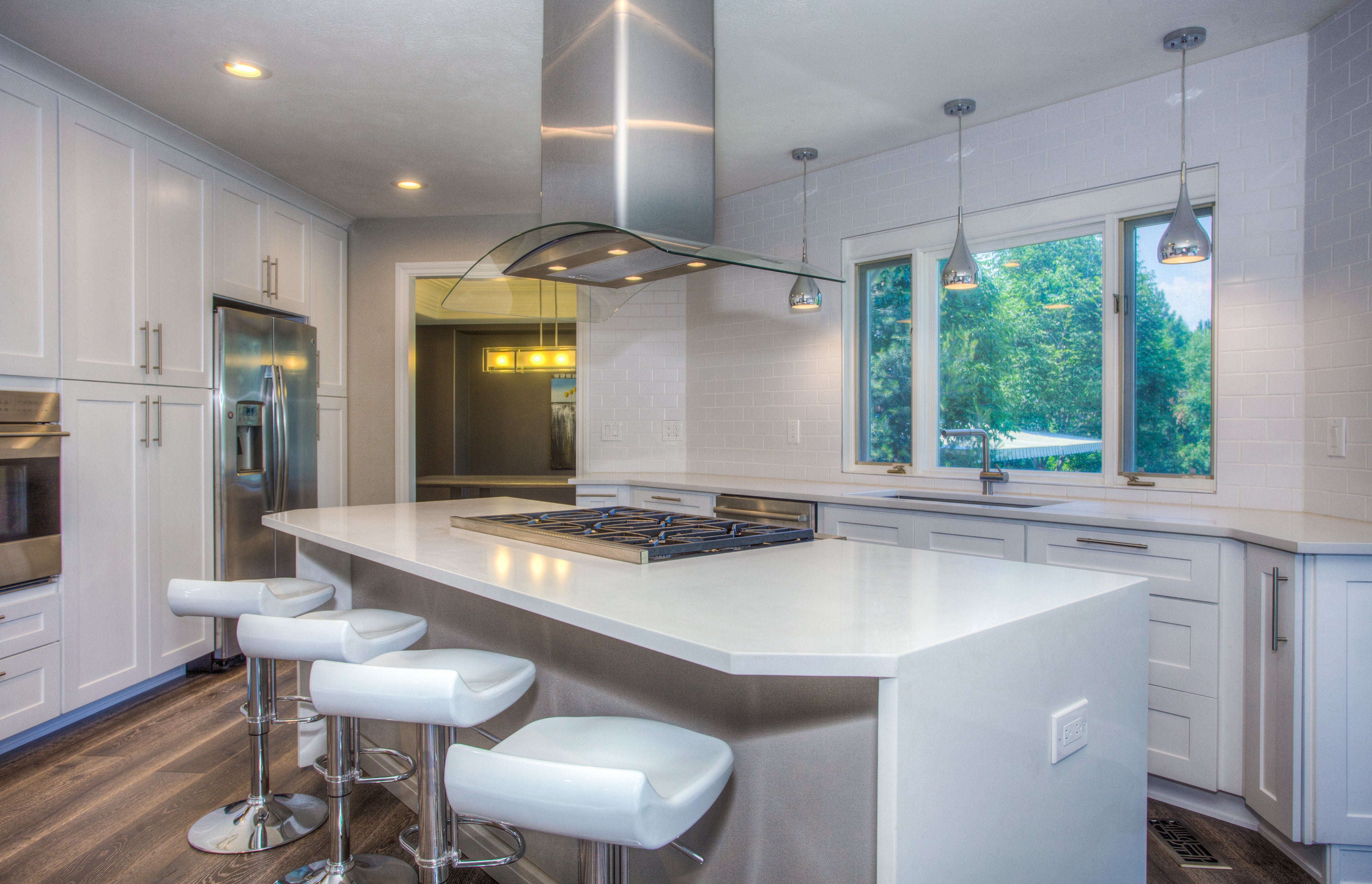News
Premium Kitchen Brand Guides: How to Buy Pre-Owned Luxury Kitchens
The kitchen is the anchor of the home. It is where people begin the day with coffee, where guests gather, and where design decisions are on display for everyone to see. For many homeowners and designers, the dream kitchen means a premium European brand. These brands are known for precision engineering, high-grade materials, and a design language that stays relevant for decades. The barrier has always been cost. A new installation from a famous manufacturer can push well into six figures. There is another path. By sourcing pre-owned and showroom display kitchens, Aurora gives buyers access to the same names and the same craftsmanship at a fraction of the original price. With careful curation, professional dismantling, and expert installation support, a pre-owned luxury kitchen becomes a smart way to raise the quality of a renovation without overspending. This guide explains how to evaluate pre-owned options, what separates each brand, and how to plan a smooth project from first measurements to final fit-out. Why a Pre-Owned Premium Kitchen Makes Sense Real savings that expand your renovation budget A new premium installation can start around sixty thousand dollars and scale up quickly with custom materials, integrated appliances, and architectural changes. Pre-owned and showroom display sets routinely come in at forty to seventy percent below comparable retail. Those savings can fund flooring upgrades, lighting plans, professional painting, better countertops, or a higher appliance tier. Sustainability with visible results Every rehomed kitchen keeps wood, stone, metals, and composite boards in circulation. The environmental cost of producing new cabinetry, hardware, and finishes is significant. Choosing pre-owned reduces demand for new materials, cuts transport and packaging waste, and extends the useful life of pieces that were engineered to last in the first place. Durability you can feel Premium European brands are built on tight tolerances, high-spec hinges, and finishes that hold up under daily use. Even after years in a private home or on display, a well-maintained set will often present with excellent structure and a surface condition that responds well to professional cleaning or light refinishing. Design that outlives trends Minimal profiles, balanced proportions, and careful material choices age gracefully. A ten year old layout from a top German manufacturer still looks clean and intentional, especially when paired with the right lighting and surfaces. Good design does not expire when a catalog year changes. How a Pre-Owned Luxury Kitchen Can Raise Home Value Prospective buyers often make decisions in the kitchen. Premium brands are recognizable, even to people outside the design world. A home that features Bulthaup, Poggenpohl, Häcker, or SieMatic signals long-term quality and thoughtful investment. You do not need to plan a sale today to benefit. Selecting a respected brand now positions the property as more competitive later. The presence of a known name in the real estate listing can also increase showings and reduce time on market. What to Check When Evaluating a Pre-Owned Kitchen Cabinet integrityOpen and close several doors and drawers. Listen for grinding or rough motion. Look for sagging lines and loose end panels. Small adjustments are normal. Structural wobble is not. Surface conditionInspect edges, high-touch zones around handles, and sink or cooktop cutouts. Hairline scratches in lacquer or micro-marks on stainless can often be polished. Deep chips on visible corners may need professional repair or discrete panel replacement. Hardware and hingesPremium hinges and runners are designed for long service. Confirm soft-close function, consistent alignment, and full extension where applicable. Replacement parts are usually available for the major brands. Appliances and integrationIdentify make, model, and serial numbers. Ask about service history. Check that decorative panels match surrounding fronts. Verify power and ventilation needs against your home’s infrastructure. Measurements and modularityRecord total run lengths, cabinet heights, toe-kick height, and tall unit dimensions. Map island size and seating overhang. Note panel thickness and filler pieces. Modular systems make reconfiguration possible, but accurate measurements prevent costly surprises. Countertops and backsplashes Stone can often be recut, but seam locations, sink type, and appliance openings set limits. Composite and stainless counters have different repair options. If counters cannot be adapted, budget for new tops that match the cabinets. Finish continuity If you plan to add cabinets or change a layout, confirm that the finish can be matched or harmonized. Near matches are normal, especially for tucked-away utility runs or new appliance towers, but they should look intentional. Planning Your Project: A Practical Timeline Week 1 to 2: Discovery and shortlisting Define the must-haves. Handle profile, color family, island seating or not, appliance fuel type, and storage needs. Share room dimensions with Aurora. Shortlist sets that can be adapted to the space. Week 2 to 3: Verification Request a detailed inventory and a cabinet map. Confirm unit heights, door swings, and appliance integration. Decide whether to keep existing appliances or swap in new units. Week 3 to 4: Site planning Draft the new layout. Identify any fill panels or new cabinets required. Plan electrical, plumbing, and ventilation updates. Select lighting. Choose countertop strategy if the original tops will not be reused. Week 4 to 6: Dismantling and transport Aurora coordinates professional dismantling. Each cabinet is labeled so reassembly follows the original logic. Panels and fronts are wrapped and protected. Transport is scheduled to align with site readiness. Week 6 to 8: Installation Base units are leveled, tall units are anchored, appliance towers are aligned, and panels are fitted. Countertops are templated or installed. Finish carpentry handles scribe details and fillers. Final adjustments fine-tune reveals and doors. Week 8 and beyond: Finishing touches Install backsplashes, task lighting, and bar seating. Calibrate appliance settings. Schedule a final walkthrough to resolve punch list items. Timelines vary by location, scope, and permitting, but a clear sequence like this keeps momentum and avoids common scheduling gaps. Budgeting Scenarios Scenario A: Compact city kitchen renovation Pre-owned handle-free system, one tall pantry, integrated dishwasher, freestanding range, new quartz counters. Typical range for cabinetry set: fifteen to twenty five thousand. Dismantling and transport: three to five thousand. Installation and finish carpentry: five to eight thousand. Counters and backsplash: five to eight thousand. Total working estimate: twenty eight to forty six thousand. Scenario B: Family kitchen with island Pre-owned system with island, two tall units, panel-ready refrigerator, new induction cooktop and oven, new stone counters. Cabinetry set: twenty five to forty five thousand. Dismantling and transport: four to six thousand. Installation and finish carpentry: seven to twelve thousand. Stone tops and backsplash: eight to fifteen thousand. Appliances: eight to twenty thousand depending on selection. Total working estimate: fifty two to ninety eight thousand. Scenario C: Large open plan space Pre-owned premium brand with long perimeter run, large island, appliance wall, and wine storage, partial reuse of original appliances. Cabinetry set: forty to seventy thousand. Dismantling and transport: five to eight thousand. Installation and carpentry: twelve to twenty thousand. Counters, backsplash, and lighting: fifteen to thirty thousand. Appliance adjustments and ventilation: five to twelve thousand. Total working estimate: seventy seven to one hundred forty thousand. These are planning ranges. Aurora’s role is to provide clarity early, so you can lock a budget with confidence. Customization and Reconfiguration Premium European lines are typically modular. That is the key to successful adaptation. You can often shift a run of drawers, convert a tall unit to house different appliances, or add a shallow storage zone for a breakfast nook. When the exact finish is no longer produced, Aurora can suggest harmonizing strategies, such as pairing a close match on a less visible wall or using a coordinated wood accent for the island so it reads as a designed contrast rather than a near-miss. Drawer internals, insert kits, and lighting can update function without changing the core look. Care, Maintenance, and Longevity Well-made cabinetry rewards simple routines. Wipe spills promptly. Use non-abrasive cleaners suitable for the surface. Periodically check hinges and runners for alignment and tighten fixings if needed. Oiled wood fronts benefit from light maintenance oil according to the manufacturer’s instructions. Natural stone countertops should be sealed as recommended. Stainless surfaces clean up with a microfiber cloth and a suitable polish. With these basics, a premium kitchen will look strong for many years. Brand Guides for Discerning Buyers The following overviews help you decide which personality fits your home and lifestyle. Each brand offers its own take on proportion, material, and ergonomics. The right choice is the one that feels effortless in your daily routine and coherent with the rest of the house. Bulthaup Buyer’s Guide Character and heritage Bulthaup, founded in Germany in 1949, is often described as the architect’s kitchen. The company is known for technical clarity and disciplined details that serve everyday use without visual noise. Many layouts feel like furniture systems that happen to cook, clean, and store at a level associated with professional spaces. Design signatures to look for • Handle-free fronts that align perfectly for a calm, planar facade. • Aluminum framing that keeps long runs straight and strong. • Thin countertops with precise edges that accentuate proportion. • Functional zones that separate prep, cook, and clean tasks. • Wall panels and rail systems that lift everyday tools off the counter. Materials and finishes Expect real wood veneers, premium lacquers, stainless steel, and solid surface or stone for tops. Fronts feel dense and sturdy in the hand. Interiors show careful edging and hardware fit. Who it fits People who want disciplined lines and a seamless flow from kitchen to living area. Open plan homes love Bulthaup because the kitchen reads like part of the architecture rather than a separate object. Tips for buying pre-owned Confirm panel counts for long aligned runs, since continuity is essential to the look. If the original layout had a wall rail system, consider keeping it. It protects counters and keeps tools where you need them. When adding new elements, choose a complementary wood or a neutral lacquer rather than chasing an exact match that no longer exists. Example configurations A ten foot prep run with integrated sink, a six foot cook run with induction and drawers, and a compact tall unit set for oven and pantry. Islands can be slender and elegant, which preserves circulation in smaller rooms while staying true to the brand’s scale. Poggenpohl Buyer’s Guide Character and heritage Poggenpohl is the world’s oldest kitchen brand with roots back to 1892. The company blends tradition with experimentation, which is why you see a broad palette of finishes and a reputation for clever storage. The brand appeals to people who want modern function with a warmer, often more luxurious material story. Design signatures to look for • The well-known handle-free concept in the +SEGMENTO line. • Tall units with hidden interior fittings that feel like wardrobes for the kitchen. • Rich lacquer systems with deep, even color. • Glass elements, including backsplashes and fronts in some collections. • Integrated lighting that brings a soft, even glow to work zones. Materials and finishes High-quality lacquers, wood veneers, glass, and stone are common. Stainless trims and shadow reveals add depth. Drawer boxes feel solid and glide smoothly. Who it fits Homeowners who want a refined, comfortable space with modern convenience. If you enjoy seeing a little more warmth and finish variety, Poggenpohl is a natural fit. Tips for buying pre-owned Take inventory of internal fittings, since much of the brand’s magic is inside the cabinets. Spice drawers, tray systems, and tall pullouts should be counted and mapped so they can be placed where you need them. If you plan to add pieces, a matching lacquer is often available or can be harmonized with careful color selection. Example configurations An appliance wall with panel-ready refrigerator, high oven and steam oven stack, and a pantry with interior drawers, paired with a long handle-free island and bar seating. The result feels tailored and welcoming. Häcker Buyer’s Guide Character and heritage Häcker has been producing kitchens since 1898 and has grown into a global name with a reputation for quality and range. The company offers modern handle-free lines and classic framed doors, which makes it easy to tune the look to your space. It is often the most flexible choice for people balancing aesthetic goals with a defined budget. Design signatures to look for • Strong value in modular handle-free runs with robust hardware. • Framed door options that create a timeless, transitional look. • Thoughtful drawer organization and insert kits. • Wide color range in lacquers and wood looks. • Solid everyday ergonomics that support family cooking. Materials and finishes Durable lacquers, engineered wood fronts with convincing grain, glass elements in some lines, and dependable hardware from highly regarded suppliers. Finishes are consistent and practical. Who it fits Owners who want German engineering with a broad design palette. City apartments, family homes, and remodels with mixed styles all work well. It is also a great choice for adding functional storage without overwhelming a room. Tips for buying pre-owned Double check cabinet heights and plinth heights so new appliances line up correctly. If you plan to blend modern and classic elements, use a clear contrast. For example, a modern island in a quiet matte color paired with framed perimeter doors in a warm tone. This looks intentional and keeps the eye moving. Example configurations Perimeter L with framed doors and a modern flat-front island. Add a tall utility zone beside the refrigerator for bulk storage. The mix provides charm without sacrificing clean lines. SieMatic Buyer’s Guide Character and heritage SieMatic has been designing kitchens since 1929 and is widely associated with quiet elegance. The brand created a handle-free concept in the 1960s and later organized its portfolio into the Pure, Urban, and Classic style worlds. The result is a system that adapts well to many types of homes while maintaining a focused aesthetic. Design signatures to look for • Precise handle-free profiles that are slim and refined. • Gentle transitions between materials rather than strong visual breaks. • Sophisticated neutral color stories that favor calm spaces. • Interior organization that keeps surfaces minimal and clutter free. • Options for framed details in the Classic world that still feel contemporary. Materials and finishes Matte and high-gloss lacquers, subtle wood veneers, stone and composite countertops, and refined hardware. Many pieces feel like fine furniture when touched and opened. Who it fits People who want luxury that does not shout. If the goal is a kitchen that reads as a composed living space rather than a technical workspace, SieMatic sits at the top of the list. Tips for buying pre-owned Plan lighting carefully. The brand benefits from layered light that supports work and enhances calm surfaces. When adapting layouts, preserve long continuous lines where possible. If new pieces are required, consider a coordinated neutral on the island or a wood accent that intentionally complements the original fronts. Example configurations A Pure collection island with integrated cooking, a discreet wall run that hides storage and dishwashing, and a small breakfast pantry behind pocket doors. The arrangement looks serene and performs at a high level. Comparing Brand Personalities at a Glance • Bulthaup: Architectural clarity, minimalist lines, strong structure, furniture-like presence. • Poggenpohl: Heritage plus innovation, deep finishes, clever storage, tailored comfort. • Häcker: Versatility, broad style range, excellent everyday function, strong value in the premium tier. • SieMatic: Quiet luxury, refined proportions, soft transitions, cohesive lifestyle feel. If you respond to crisp edges and pure planes, start with Bulthaup. If you want warmth and integrated storage tricks, explore Poggenpohl. If you need flexibility with a premium feel, Häcker is a standout. If your vision is a calm living space that happens to be a kitchen, SieMatic will feel right. Common Mistakes to Avoid Skipping a full cabinet inventoryWithout a cabinet map, small parts get lost in transit and reconfiguration becomes guesswork. Aurora provides detailed inventories to prevent this. Underestimating countertop constraintsReusing stone requires the right sizes and seam options. If reuse will force awkward seams, plan new tops and set realistic expectations early. Forgetting appliance ventilation and powerInduction, built-in coffee, and high-output ranges have specific requirements. Confirm circuits, breaker capacity, makeup air, and duct paths. Chasing exact finish matches for hidden zonesIn a utility run or a back pantry, a coordinated neutral is often better than a near match that looks accidental. Leaving lighting as an afterthought Great cabinetry needs great lighting. Combine ceiling ambient, under-cabinet task, and accent lighting to reveal surfaces properly. Frequently Asked Questions Do warranties transfer on pre-owned kitchensCabinet warranties typically do not transfer, but parts and service are available for most brands. Appliance warranties may be active depending on age and program. Aurora advises on service options. Can a pre-owned set fit a smaller or larger space than the originalYes. Modular design is the foundation of these systems. Additional filler panels, new side panels, and strategic reordering of units allow many layouts to scale up or down. In larger rooms, an added storage wall or a lengthened island can complete the plan. What happens if a panel is damaged during removalProfessional dismantling reduces risk. If a panel is compromised, Aurora works on a remedy that may include repair, veneer work, or a coordinated replacement. This is also where a planned contrast on an island can be useful. Is mixing brands acceptableYes. Many buyers mix a cabinetry brand with appliances from a different manufacturer. The key is alignment of proportion and finish harmony. Aurora can help test samples and mockups before committing. How long should I expect this to takeTwo to three months is common for a straightforward project once a set is selected, with lead time driven by site readiness, transport schedules, and countertop fabrication. Complex renovations with structural work will take longer. Will a pre-owned kitchen look usedProperly curated sets present very well. Once installed with new counters, lighting, and paint, most people read the space as freshly completed. Minor touchups are normal and are addressed during installation. Working With Aurora Aurora’s role is to make the process clear, efficient, and rewarding. The team evaluates each potential kitchen for design integrity, structural condition, and adaptability. Buyers receive accurate measurements and inventories, photos, and guidance on reconfiguration. Logistics are planned with care. Dismantling is handled by professionals who understand premium cabinetry. Each piece is labeled, wrapped, and loaded to minimize movement. On site, installers level bases, anchor tall units, align fronts, and manage fillers and scribes so reveals look even. If you retain existing appliances, Aurora confirms fit and ventilation. If you are upgrading, the team coordinates with your appliance supplier. Countertop templating is scheduled to minimize downtime. The result is a cohesive, premium installation that feels tailored to the home. Step-by-Step Buying Checklist Measure the room. Note ceiling heights, window locations, and radiators or floor vents. Take photographs of the space from multiple angles. Identify non-negotiables. Island seating count, pantry storage, or specific appliances. Share dimensions and goals with Aurora. Request candidate sets. Review cabinet maps and inventories. Confirm counts of drawers, doors, and tall units. Select appliances. Decide what to keep from the set and what to replace. Approve dismantling and transport plan. Verify dates and packaging. Prepare the room. Update electrical and plumbing. Patch and paint walls. Install cabinetry and appliances. Schedule countertop templating if required. Add lighting and finishing touches. Conduct a final walkthrough. Keep this list in your project folder. It makes coordination with designers, contractors, and family members much easier. Bringing It All Together A pre-owned premium kitchen delivers the feel of a high-end project with stronger economics and a lighter environmental footprint. The ingredients are simple. Choose a brand whose personality suits your home. Verify condition and inventory. Plan the layout with care. Let professionals dismantle, transport, and install. Treat lighting and counters as equal partners to the cabinetry. Maintain the surfaces with basic routines. The result is a room that works beautifully every day and looks as good at night with the pendants dimmed as it does in bright morning light. Bulthaup satisfies the minimalist who loves order. Poggenpohl rewards the host who wants refined warmth and hidden storage that quietly does its job. Häcker gives range and value in the premium space, which helps when a project must juggle multiple rooms or add-on storage. SieMatic speaks to the homeowner who wants calm, composed luxury that blends into the rest of the living area. Whatever you choose, Aurora’s curation and project support lower risk and raise the quality of the outcome. You save time. You save money. You gain a kitchen that feels designed for the way you live. Schedule a free consultation to review current availability, confirm fit for your space, and get a clear project plan from first measurement to final install. Note: Our inventory changes weekly as rare, high-end kitchens find their next life in beautiful homes. Explore what’s available today and see how Aurora can transform your home.
Read moreNews
The Ultimate Guide to Buying a Pre-Owned Premium Kitchen
Why Pre-Owned Premium Kitchens Are Trending Luxury kitchens have always symbolized more than just cooking spaces. They represent craftsmanship, elegance, and a long-term investment in both functionality and lifestyle. For decades, homeowners with the budget for brands like Bulthaup, Poggenpohl, or Eggersmann have viewed them as status symbols and design masterpieces, often costing well into six figures. But today, there’s a shift. More and more homeowners, interior designers, and renovators are looking beyond “new” and discovering the remarkable value of pre-owned premium kitchens. Whether they’re showroom displays, kitchens lightly used in luxury homes, or high-end sets being replaced during remodels, these kitchens provide the look, durability, and prestige of six-figure design at a fraction of the cost. At the same time, sustainability has become a core driver of purchasing decisions. Renovators who want to combine eco-friendly choices with sophisticated style are finding that re-homing a premium kitchen is both a responsible and forward-thinking option. In this guide, we’ll cover everything you need to know to make an informed decision from the financial and environmental benefits to the step-by-step buying process, including brand insights, logistics, customization, and real-world tips. By the end, you’ll have the knowledge to confidently invest in a kitchen that brings world-class design into your home without the world-class price tag. The Benefits of Buying Pre-Owned vs. New Save Big Without Sacrificing Quality A newly purchased luxury kitchen can easily cost $100,000–$250,000 once cabinetry, appliances, stone surfaces, and installation are factored in. That price tag often excludes customizations, shipping, or specialty trades. Pre-owned premium kitchens typically cost 50–70% less making iconic European and American brands suddenly accessible to a much wider audience. With the right source, you could acquire an entire set of Poggenpohl cabinetry with stone counters and premium appliances for less than the price of a mid-range kitchen from a mainstream retailer. Importantly, these savings don’t come with compromises in quality. Luxury kitchens are built with durability and timelessness in mind, so even after years of light use or display, the cabinetry, hinges, finishes, and hardware often look and function as new. Make a Sustainable Choice The environmental impact of kitchen remodels is staggering. Every new kitchen involves cutting down trees, quarrying stone, extracting metals, and manufacturing synthetic materials. A single luxury kitchen can generate tons of waste if discarded during a remodel or showroom refresh. By choosing pre-owned, you’re contributing to the circular economy, extending the lifespan of materials that are still in excellent condition. Instead of ending up in landfills or recycling plants, these cabinets, counters, and appliances continue to serve another home. Sustainability-conscious homeowners and designers increasingly recognize that eco-luxury is the new standard. A kitchen that is both beautiful and environmentally responsible carries prestige of its own. Unlock Rare Designs Another overlooked benefit: pre-owned premium kitchens often include designs, finishes, or layouts that are no longer available. Showroom exclusives, discontinued wood stains, rare veneers, or custom cabinetry that once had a year-long lead time can now be purchased immediately. For renovators who want something unique, this market offers treasures you cannot order new. What to Look for When Buying a Pre-Owned Luxury Kitchen Buying a pre-owned premium kitchen is not the same as purchasing flat-pack furniture. The goal is to secure pieces that are built to last another 20+ years, while ensuring the set will integrate seamlessly into your space. Here’s what matters most: High-End Brands to Target Focus on established luxury brands that have a reputation for durability, modular design, and timeless style. Poggenpohl – Germany’s oldest kitchen brand, pioneers of modern cabinetry. Häcker – German luxury kitchen brand known for precision engineering, modern design, and sustainable craftsmanship. Siematic – Known for versatile cabinetry and customizable design. Bulthaup – Premium kitchen brand renowned for its minimalist design, precision engineering, and timeless architectural style. Eggersmann – Offers custom finishes, often using rare or exotic materials. Boffi – Architectural and cutting-edge, often favored by designers and architects. These brands represent engineering excellence. Hinges won’t sag, lacquer won’t easily chip, and drawers will glide smoothly for decades. Premium Materials to Inspect High-end kitchens stand out for their material integrity: Cabinet Construction: Look for solid wood or engineered wood with durable veneer, not particle board. Finishes: High-gloss lacquer, natural wood veneers, glass, or metal inlays. Countertops: Quartz, granite, marble, or Corian. Hardware: Soft-close hinges, steel runners, or brand-stamped pulls. Appliances: Miele, Gaggenau, Sub-Zero, or Wolf—brands synonymous with performance and longevity. When buying pre-owned, inspect whether these materials are intact and whether minor wear can be easily refinished. Condition & Completeness Not all pre-owned kitchens are equal. A showroom display kitchen may be close to mint condition, never used for actual cooking, while a privately owned kitchen could have wear around sink areas or appliances. Checklist for evaluation: Check for water damage near sinks and dishwashers. Look for surface scratches or dents on visible panels. Confirm whether appliances are included (and whether warranties transfer). Ensure the set comes with all cabinetry pieces including filler panels, toe kicks, and handles. Step-by-Step Guide to Buying Step 1: Measure Your Space Precisely Accurate measurements are non-negotiable. Measure: Wall lengths Ceiling heights Window placements Doorways (for moving large pieces in) A pre-owned kitchen can only be as functional as the fit. Consider professional measurement if you’re not confident. Step 2: Match Your Design Style While luxury kitchens are timeless, they come in many styles from minimalist white lacquer to warm oak or matte black. Choose a style that complements your home’s character. Pro tip: Even if the finish isn’t perfect, luxury cabinetry can often be re-painted, re-faced, or updated with new counters and hardware at a fraction of replacing everything. Step 3: Plan Logistics Early Pre-owned kitchens require more planning than new sets delivered in flat boxes. Consider: Professional Disassembly – To preserve integrity during removal. Specialized Moving – Large stone counters, tall cabinets, and appliances require expert handling. Experienced Installers – Not all contractors are familiar with brands like Poggenpohl or Boffi. Hire specialists who understand luxury cabinetry systems. Step 4: Customize for Fit Expect adjustments. Even modular systems rarely transfer perfectly from one home to another. Solutions include: Adding filler panels to close gaps. Resizing certain cabinets. Installing new countertops cut to your dimensions. The good news: with thoughtful planning, these modifications can make your kitchen look custom-built for your space. Aurora’s Simplified Buying Experience At Aurora, the mission is to make this process as seamless as possible. Aurora handles what overwhelms most homeowners: Curated Selection – Only high-quality, vetted kitchens make the cut. Transparent Pricing – Clear, upfront costs always a fraction of retail. Sustainable Model – Every re-homed kitchen diverts valuable materials from waste. Guided Support – From measuring guides to installer recommendations, Aurora helps every step of the way. This means you gain a partner who ensures the process is efficient and stress-free. Common Mistakes to Avoid Not Measuring Properly – Guesswork leads to costly misfits. Ignoring Logistics Costs – Factor in disassembly, moving, and re-installation. Assuming Appliances Are Included – Clarify before purchase. Skipping Professional Help – Luxury kitchens are precision-engineered; improper installation reduces their lifespan. Over-Customizing Too Early – See how the set fits before commissioning major modifications. FAQs Q: How much can I really save? A: Typically 50–70%, sometimes more for showroom models. Q: Can I customize a pre-owned kitchen? A: Yes. Premium cabinetry allows reconfiguration, refinishing, and hardware upgrades. Q: What about warranties? A: Appliance warranties may or may not transfer. Cabinetry typically has no warranty once resold, but durability remains. Q: Are pre-owned kitchens only for large homes?A: No. With modifications, even compact apartments can benefit. Conclusion: Upgrade to Luxury for Less Choosing a pre-owned premium kitchen means enjoying world-class design, eco-friendly living, and significant savings without compromise. For homeowners planning a remodel, designers sourcing distinctive elements, or renovators seeking high ROI, pre-owned luxury kitchens are the smart path forward. At Aurora, each kitchen is carefully curated, sustainably sourced, and priced to make luxury achievable. Note: Our inventory changes weekly as rare, high-end kitchens find their next life in beautiful homes. Explore what’s available today and see how Aurora can transform your home.
Read more

